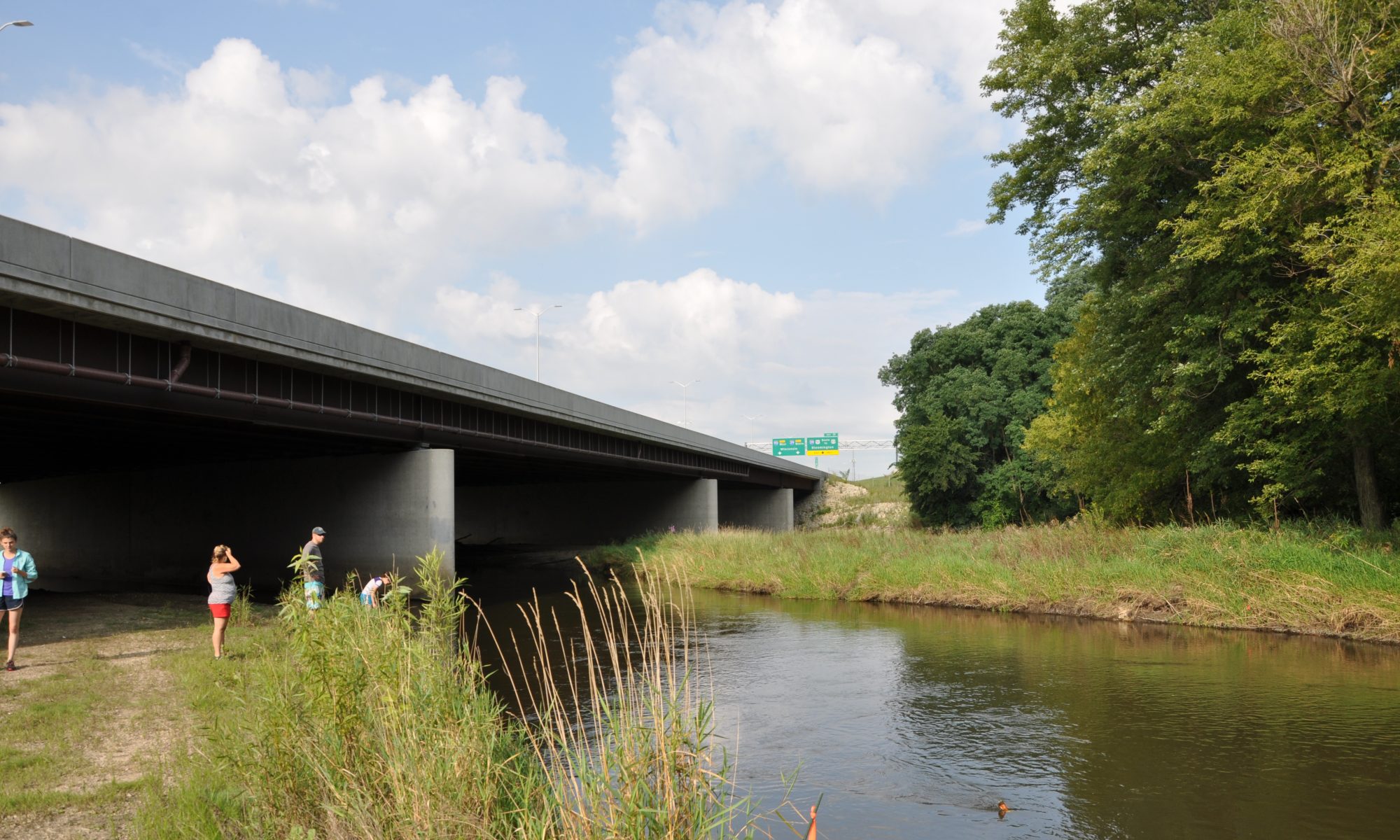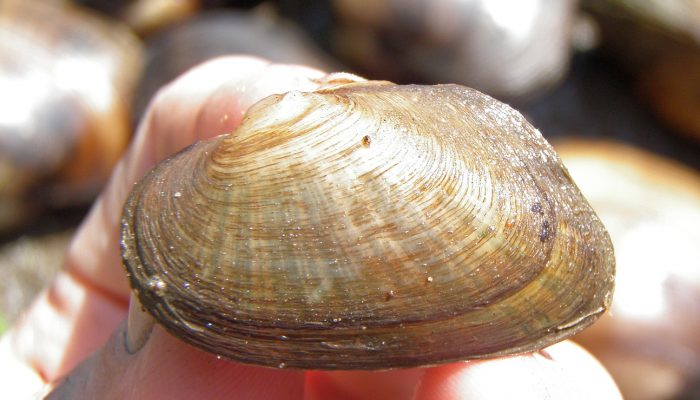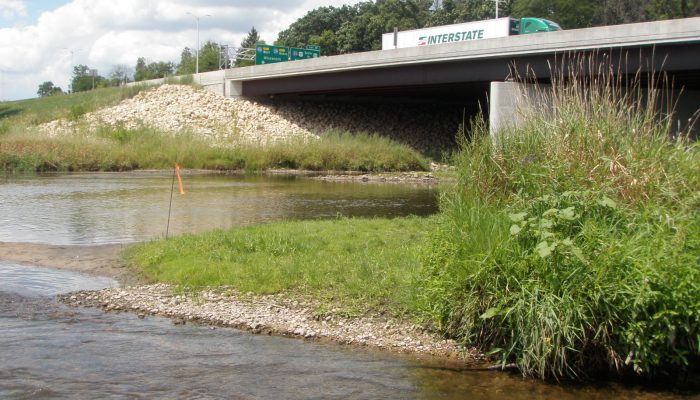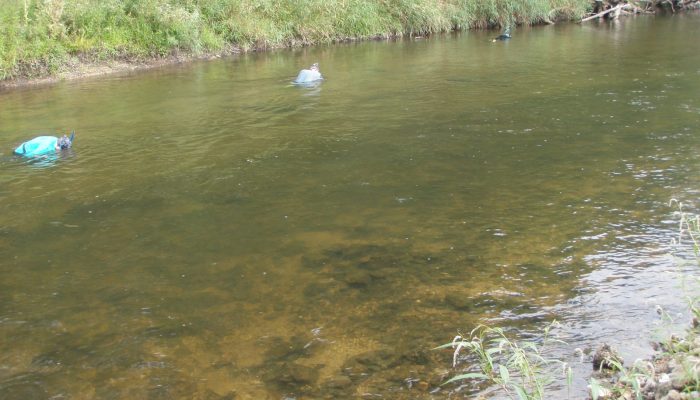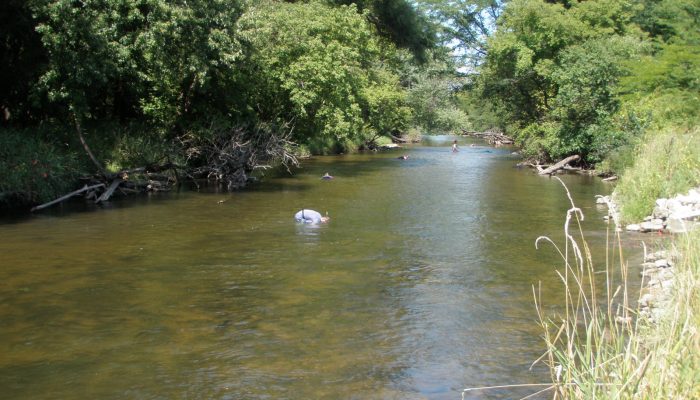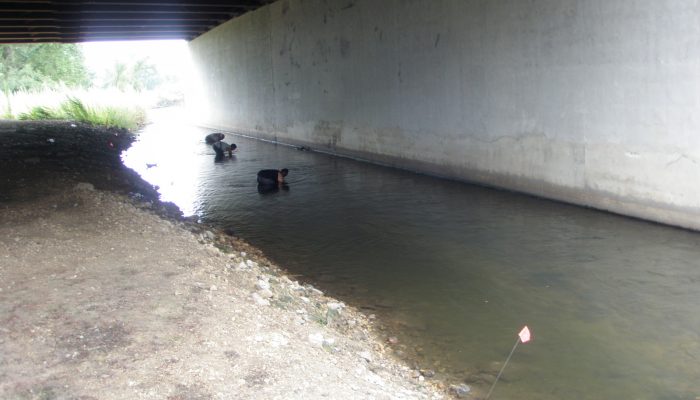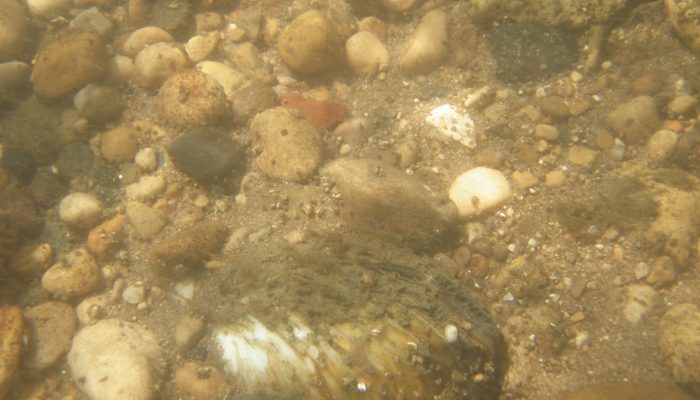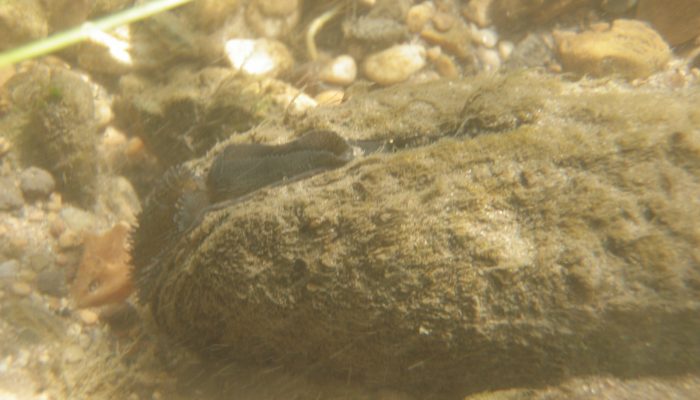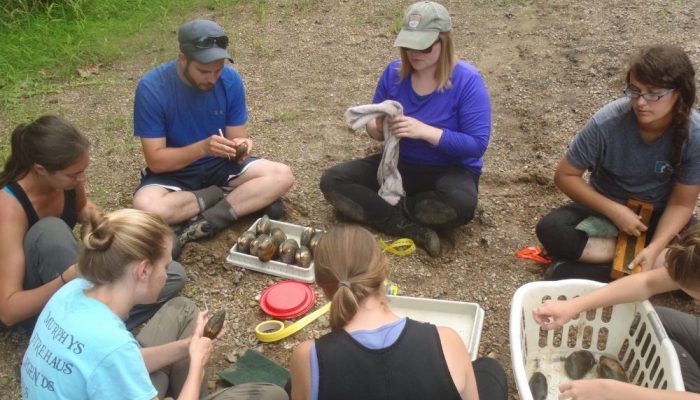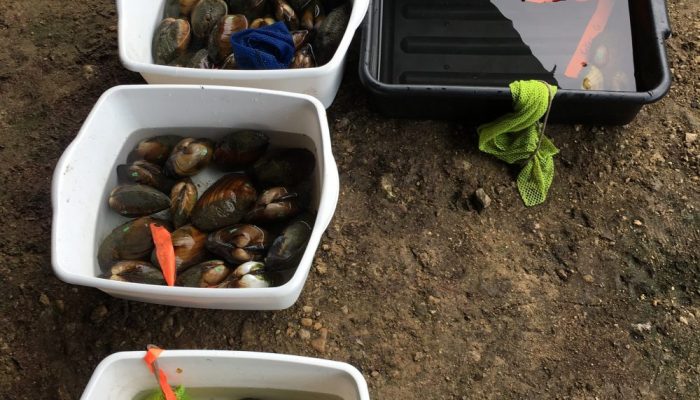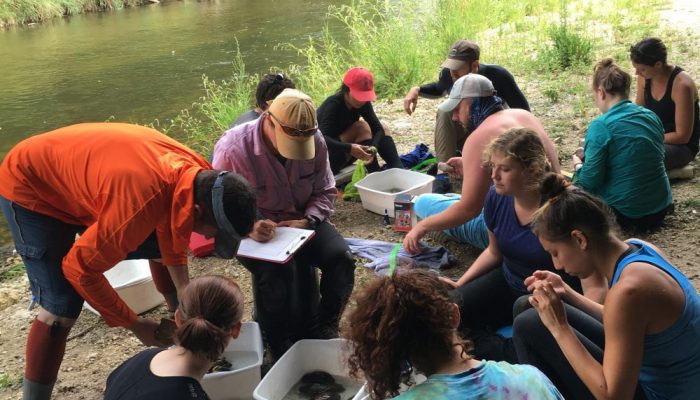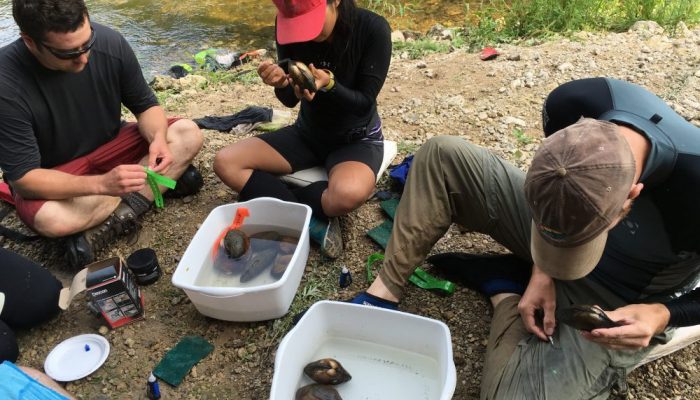The main methods for surveying mussels in the Tollway corridor include:
– snorkeling to visually search for mussels
– grubbing – feeling in the substrate for buried mussels
– incidental encounters
UBAP malacologist Sarah Douglass heads up the Freshwater Mollusk Ecology and Conservation Program. In addition to surveying streams in the tollway region for endangered and threatened species, FMEC also obtains grants to conduct research projects including :
– Mussel Translocations
– Long-term population monitoring
– using eDNA to detect Simpsonaias ambigua
– Causal factors of decline in mussel assemblage health
Highlights from our work:
- Approximately 60 percent of translocated mussels survived their first year, indicating this is likely an effective mitigation effort.
Publications:
Curtis, A., J.S. Tiemann, S.A. Douglass, M.A. Davis, and E. Larson. 2020. High stream flows dilute environmental DNA (eDNA) concentrations and reduce detectibility. Diversity and Distributions 2020:00:1–14. https://doi.org/10.1111/ddi.13196.
Douglass, S.A., E. Reasor, J.S. Tiemann, A.P. Stodola, S. McMurray, and B. Poulton. 2020. Recent evaluation of Corbicula Form D distribution in the Midwest, U.S.A. American Midland Naturalist 183(1):136–142.
Chiavacci, S.J., A.P. Stodola, and S.A. Douglass. 2018. Natural and anthropogenic factors predict the presence of two freshwater mussels (Bivalvia: Unionidae) in Illinois, U.S.A. Freshwater Science 37(4). (December 2018): 870–884. https://doi.org/10.1086/700681.
Tiemann J.S., C. Lawlis, and S.A. Douglass. 2018. First occurrence of a novel Corbicula Form D lineage in the Ohio River. Nautilus 132(1):30–32.
Cao, Y., K.S. Cummings, L. Hinz, S.A. Douglass, A.P. Stodola, and A.M. Holtrop. 2017. Reconstructing the natural distribution of individual unionid mussel species and species diversity in wadeable streams in Illinois, USA with reference to stream bioassessment. Freshwater Science 30(3):669–682.
Tiemann, J.S., A.E. Haponski, S.A. Douglass, T. Lee, K.S. Cummings, M.A. Davis, and D.O. Foighil. 2017. First record of a putative novel invasive Corbicula lineage discovered in the Illinois River, Illinois, USA. BioInvasions Records 6(2):159–166.
Fritts, A.K., A.P. Stodola, S.A. Douglass, and R.M. Vinsel. 2016. Investigation of freshwater mussel glochidia on Asian carp and native fishes of the Illinois River. Freshwater Mollusk Biology and Conservation 19: 22–28.
Tiemann, J.S., S.A. Douglass, A.P. Stodola, and K.S. Cummings. 2016. Effects of lowhead dams on freshwater mussels in the Vermilion River basin, Illinois, with comments on a natural dam removal. Transactions of the Illinois State Academy of Science 109:1–7.
Tiemann, J. S., M. J. Dreslik, S. J. Baker, and C. A. Phillips. 2016. Assessment of a short-distance freshwater mussel relocation as a viable tool during bridge construction projects. Freshwater Mollusk Biology and Conservation 19:80–87.
Cao, Y., A.P. Stodola, S.A. Douglass, D. Shasteen, K.S. Cummings, and A. Holtrop. 2015. Modelling and mapping the distribution, diversity, and abundance of freshwater mussels (Family Unionidae) in wadeable streams of Illinois, U.S.A. Freshwater Biology 60:1379–1397.
Shasteen, D.K., S.A. Douglass, and A.P. Stodola. 2015. Occurrence of the Little Spectaclecase Villosa lienosa (Conrad, 1834) (Mollusca: Unionidae) downstream of the Wabash and Ohio River confluence in Academy of Science 108:5–6.
